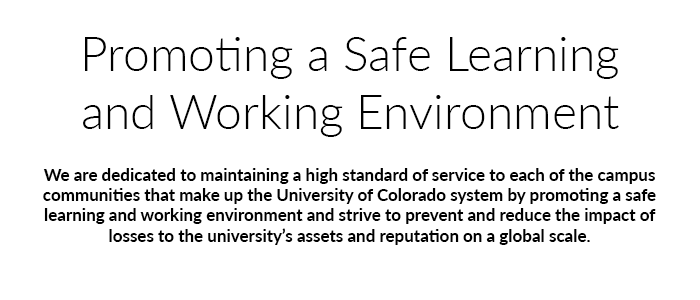Empty
Body Top
Department Body Top
Body
Department Body
File a Claim
Submit a claim with our online report forms for workers’ compensation, exposures, property loss and general liability. LEARN MORE
Event & Activity Planning
Helpful tools for planning on- and off-campus activities, events with alcohol and special event insurance.
LEARN MORE
Workers' Compensation
Incident procedure, designated medical providers, information on eligibility and resources for supervisors and payroll liaisons. LEARN MORE
Professional Risk Management
If you are looking to report a patient occurrence, request verification of professional liability insurance, or if an attorney has contacted you regarding care that you provided, please contact the office of Professional Risk Management.










